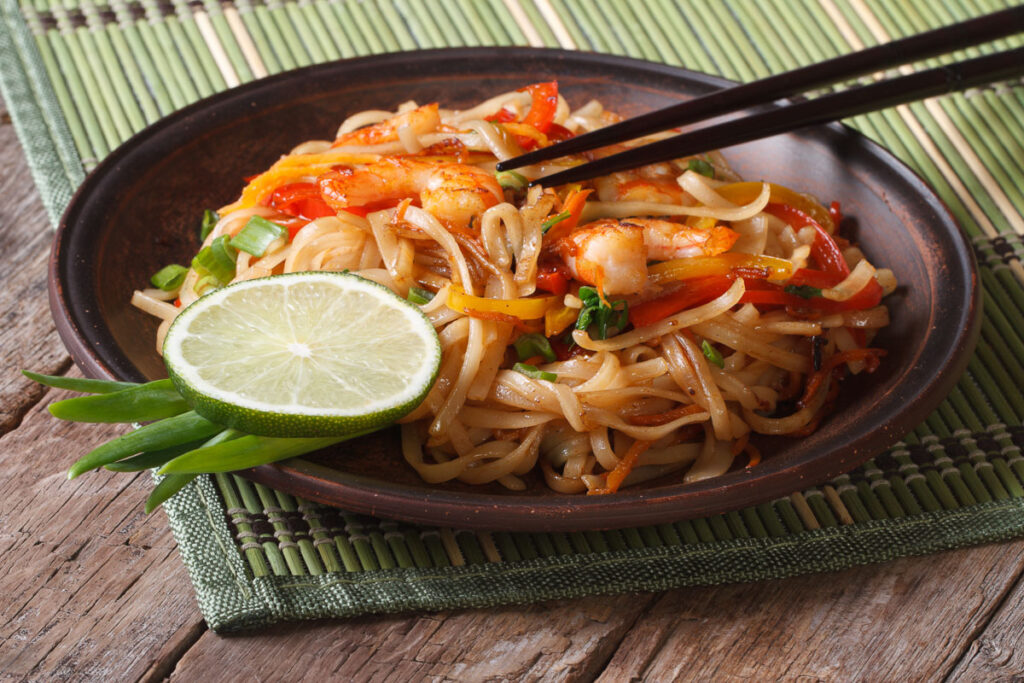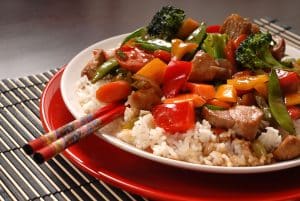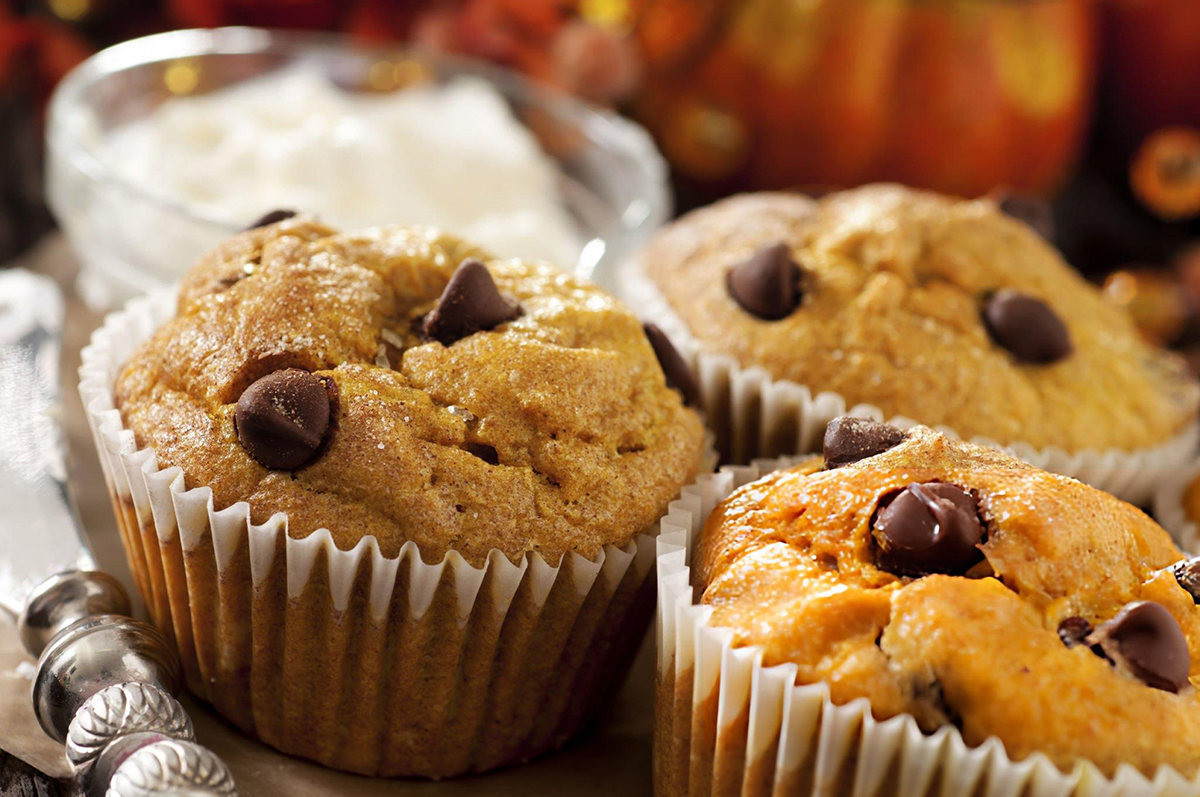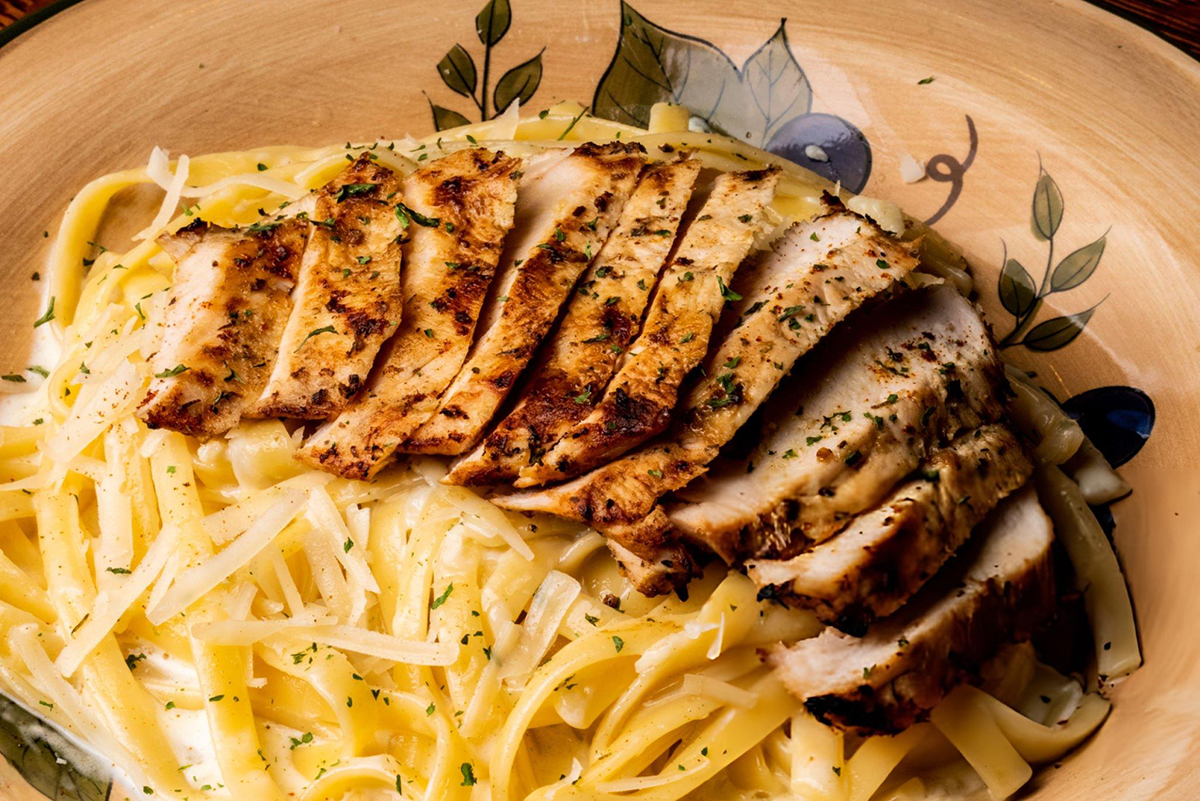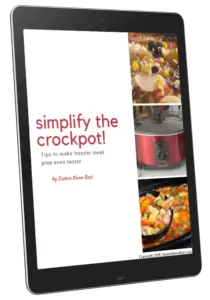Deliciously Tangy Shrimp Pad Thai Recipe: A Flavorful Twist on a Classic Dish!
Get ready to elevate your taste buds with our tangy Shrimp Pad Thai recipe! This flavorful twist on a classic dish will leave you wanting more. With a perfect balance of tanginess, spice, and umami, this recipe will surely impress your family and friends.
Our brand voice is all about celebrating culinary creativity and providing inspiration in the kitchen. We believe in using fresh, high-quality ingredients to create delicious meals that delight the senses. This Shrimp Pad Thai recipe does just that and offers a unique spin on a beloved favorite. This recipe appears in our cookbook “Cooking for One – Not an Army” along with other delicious recipes. It’s made for one, but you can easily double (or triple) this recipe for company or leftovers! If you didn’t get a copy yet, our book is on Amazon right here!
The star of this dish is succulent shrimp paired with vibrant vegetables and classic Pad Thai sauce. The combination of tartness from lime juice, sweetness from palm sugar, and savory notes from fish sauce creates a flavor explosion that is hard to resist.
Whether you’re a seasoned home cook or a beginner in the kitchen, this recipe is easy to follow and guarantees fantastic results. So grab your apron, gather your ingredients, and embark on a culinary adventure with this Shrimp Pad Thai recipe!
History and Origins of Pad Thai
Pad Thai, a beloved stir-fried noodle dish, has a rich and fascinating history that dates back to the 1930s in Thailand. The origins of this iconic dish can be traced to a time when the country was undergoing significant social and political changes. During this period, Thailand was actively promoting its national identity. The government sought to create a unifying national dish that would represent the country’s culinary heritage.
The dish we now know as Pad Thai was not always called by that name. In fact, it was initially known as “Baan Pad Thai,” which translates to “fried Thai noodles.” The dish was popularized by the Thai government under the leadership of Field Marshal Plaek Phibunsongkhram. He served as the country’s prime minister from 1938 to 1944. Phibunsongkhram saw Pad Thai as a way to promote Thai nationalism and showcase the country’s diverse culinary traditions to the world.
The recipe for Pad Thai evolved over time. Different regions and chefs added their own unique twists and variations. While the core ingredients of rice noodles, bean sprouts, peanuts, and a savory-sweet sauce remain consistent, the dish has taken on many forms. There are classic street food versions to more refined restaurant interpretations. Today, Pad Thai is considered one of the most iconic and beloved dishes in Thai cuisine. People all over the world love it.
Ingredients for Shrimp Pad Thai
To create our deliciously tangy Shrimp Pad Thai, you’ll need a carefully curated selection of fresh and flavorful ingredients. The key to this dish’s success lies in the perfect balance of sweet, sour, salty, and umami flavors.
The foundation of the dish is, of course, rice noodles. Look for medium-width rice stick noodles which provide the perfect texture and absorb the flavors of the sauce beautifully. For the protein, we’ve chosen succulent shrimp which adds a fantastic seafood element to the dish.
To create Pad Thai sauce, you’ll need fish sauce, soy sauce, honey, sriracha, and lime juice. These ingredients work together to create a harmonious blend of sweet, sour, and savory notes. Complementing the sauce is a variety of fresh vegetables. We include bean sprouts, scallions, and crushed peanuts which add crunch and freshness to the dish.
Rounding out the ingredients are garlic and egg which help to tie all the flavors together. The combination of these carefully selected components ensures that each bite of your Shrimp Pad Thai will be a delightful flavor explosion.
Step-by-step Instructions for Making Shrimp Pad Thai
Preparing this delectable Shrimp Pad Thai is a straightforward process that is easily mastered in your own kitchen. Follow these step-by-step instructions to create a dish that will impress.
Begin by soaking the rice noodles in hot water for 10-15 minutes or until they are pliable and soft. Drain the noodles and set them aside. In a small bowl, mix together the Pad Thai sauce ingredients: fish sauce, soy sauce, honey, sriracha, and lime juice. Whisk the mixture until completely combined and set it aside.
Next, heat a large wok or skillet over high heat and add a tablespoon of oil. Once the oil is shimmering, add the minced garlic and stir-fry for 30 seconds, or until fragrant. Then, add the shrimp and stir-fry for 2-3 minutes or until they are partially cooked and starting to turn pink.
Push the shrimp to the side of the wok and crack the egg into the empty space. Scramble the egg. Then mix them with the shrimp. Add the soaked rice noodles and the Pad Thai sauce to the wok and use tongs or chopsticks to gently toss and combine all the ingredients, ensuring the noodles are evenly coated with the sauce.
Continue to stir-fry the noodles for 2-3 minutes or until they are tender and the shrimp are fully cooked. Add the bean sprouts, scallions, and crushed peanuts, and toss everything together for another minute or two. You want the vegetables to be slightly wilted and the flavors have melded.
Finally, taste the Shrimp Pad Thai and adjust the seasoning if necessary. Perhaps add a touch more fish sauce or lime juice to achieve the perfect balance of flavors. Serve the dish immediately after garnishing with extra crushed peanuts, lime wedges, and fresh cilantro, if desired. Enjoy the delicious and tangy combination of flavors in every bite!
Tips for Perfecting Your Shrimp Pad Thai Recipe
Achieving the perfect Shrimp Pad Thai requires a few key techniques and tips to ensure your dish is both visually appealing and bursting with flavor. Follow these guidelines to take your Pad Thai game to the next level.
First and foremost, it’s crucial to have all your ingredients prepped and ready to go before you start cooking. Pad Thai is a fast-paced dish that requires quick work. So, having everything measured, chopped, and within reach will make the cooking process much smoother.
When it comes to the noodles, be sure to soak them in hot water for the recommended time. This helps them become pliable and absorb the flavors of the sauce more effectively. Avoid overcooking the noodles. They can become mushy and lose their signature chewy texture.
Another important tip is to use a wok or large skillet with high heat to ensure a proper stir-fry. The high heat helps to caramelize the ingredients and create that signature wok-charred flavor. Be sure to work in batches if necessary. Overcrowding the pan will lead to steaming instead of stir-frying.
Lastly, pay close attention to the balance of flavors in your Pad Thai sauce. The perfect combination of sweet, sour, salty, and umami is what makes this dish so crave-worthy. Taste and adjust the sauce as you go. Add more fish sauce for saltiness, lime juice for tartness, honey for sweetness until you achieve the perfect flavor profile.
By following these tips and techniques, you’ll be well on your way to creating a Shrimp Pad Thai that is not only visually stunning but also bursting with the most delicious and tangy flavors imaginable. Bon appétit!
Variations and Substitutions for Shrimp Pad Thai
While the classic Shrimp Pad Thai is a beloved dish, there’s always room for creativity and experimentation in the kitchen. Whether you’re looking to accommodate dietary restrictions, explore new flavor profiles, or simply switch things up, there are plenty of variations and substitutions you can try with this versatile recipe.
For those who prefer a vegetarian or vegan option, you can easily swap out the shrimp for tofu, tempeh, or a selection of seasonal vegetables such as mushrooms, bell peppers, or broccoli. These plant-based proteins and vegetables will still provide a satisfying and flavorful Pad Thai experience.
If you’re not a seafood lover, experiment with different types of protein such as chicken, beef, or a mix of other seafood like scallops, squid, or even a combination of shrimp and chicken. Each protein will lend its own unique flavor and texture to the dish.
When it comes to the noodles, while rice noodles are the traditional choice, you can also try using other types of noodles, such as glass noodles (made from mung bean or sweet potato starch) or even whole-wheat or gluten-free noodles to cater to different dietary needs.
To add even more depth of flavor, experiment with the sauce ingredients. For example, you could substitute the sriracha with a touch of lime zest and juice, or try using a combination of palm sugar and honey for a slightly different sweetness. Additionally, you can add a pinch of chili flakes to amp up the heat and spice level.
No matter which variations or substitutions you choose, the key is to maintain the core flavors and textures that make Pad Thai so beloved. With a little creativity and experimentation, you will put your own unique spin on this classic dish and discover new and delicious ways to enjoy it.
Health Benefits of Shrimp Pad Thai
Contrary to popular belief, Shrimp Pad Thai can be a surprisingly nutritious and health-conscious dish when prepared with the right ingredients and techniques. Let’s explore the various health benefits that this flavorful recipe has to offer.
At the heart of Pad Thai are the rice noodles which are a gluten-free and carbohydrate-rich source of energy. However, the key is to use the right portion size and balance the noodles with an abundance of fresh vegetables and protein-rich shrimp. This ensures that the dish provides a well-rounded and balanced nutritional profile.
The shrimp in this recipe are a fantastic source of lean protein. Protein is essential for muscle development, tissue repair, and maintaining a healthy metabolism. Shrimp are also low in calories and high in beneficial omega-3 fatty acids. Omega-3s have been linked to reduced inflammation and improved heart health.
The array of fresh vegetables, such as bean sprouts and scallions, adds a nutrient-dense boost to the dish. These veggies are rich in vitamins, minerals, and antioxidants that support overall health and well-being. The crunchy texture they provide also helps to balance the soft, chewy noodles.
Additionally, the Pad Thai sauce, made with ingredients like fish sauce, lime juice, and honey, offers a unique blend of flavors that provide health benefits. The tangy and sweet notes from the lime juice and honey help regulate blood sugar levels, while the umami-rich fish sauce adds a boost of gut-friendly probiotics.
By making mindful choices, such as using low-sodium soy sauce, limiting the amount of oil used, and incorporating a variety of fresh produce, you will transform this classic dish into a nutritious and satisfying meal that nourishes both your body and your taste buds.
Serving Suggestions and Presentation Ideas
Serving up a delectable Shrimp Pad Thai dish is not just about the flavors. It’s also about the presentation. By paying attention to the way you plate and garnish your creation, you will elevate the overall dining experience and make your Pad Thai truly shine.
One classic way to serve Shrimp Pad Thai is to arrange the noodles and toppings in a shallow bowl or plate. This serving dish is gorgeous! A shallow dish allows the vibrant colors and textures to take center stage. Start by creating a nest-like base of the cooked rice noodles, then artfully arrange the shrimp, bean sprouts, scallions, and crushed peanuts on top.
To add a touch of elegance, consider serving the Pad Thai in a traditional Thai-style bowl or plate with an elevated rim. This not only helps to contain the dish but also provides a beautiful canvas for your culinary masterpiece. Further enhance the presentation by garnishing the Pad Thai with fresh herbs such as cilantro or Thai basil, and a few lime wedges for a pop of color and a final burst of citrusy flavor.
For a more interactive dining experience, serve the Shrimp Pad Thai family-style. This allows your guests to assemble their own portions. Arrange the noodles, shrimp, and toppings on a large platter, and provide small bowls of the Pad Thai sauce, crushed peanuts, and any other desired garnishes. Your guests will customize their servings to their liking and encourages a more social and engaging meal.
Finally, consider serving the Shrimp Pad Thai alongside complementary dishes, such as a refreshing green papaya salad, crispy spring rolls, or a fragrant Tom Yum soup. This creates a well-rounded and authentic Thai dining experience that will leave your guests thoroughly impressed and satisfied.
Remember, the key to a visually stunning Shrimp Pad Thai is to pay attention to the balance of colors, textures, and flavors. With a little creativity and attention to detail, you will transform this beloved dish into a true work of culinary art that will delight the senses and leave a lasting impression on your guests.
Frequently Asked Questions about Shrimp Pad Thai
As a beloved and iconic dish, Shrimp Pad Thai often sparks a variety of questions from home cooks and food enthusiasts alike. Here are some of the most commonly asked questions and their answers to help you navigate this delectable recipe with confidence.
Q: Can I use a different type of protein besides shrimp?
A: Absolutely! Shrimp is the traditional protein used in Pad Thai, but you can easily substitute it with other proteins such as chicken, beef, tofu, or a mix of seafood. Just be sure to adjust the cooking time accordingly as different proteins may require different cooking methods.
Q: What type of noodles should I use for Pad Thai?
A: The traditional choice for Pad Thai is rice stick noodles which provide the perfect chewy texture and ability to absorb the flavors of the dish. However, you can also experiment with other types of noodles such as glass noodles or even whole-wheat or gluten-free options depending on your dietary preferences.
Q: Can I make Pad Thai ahead of time?
A: Pad Thai is best served fresh as the noodles can become overly soft and sticky if left to sit for too long. However, you can prepare some of the components in advance such as the Pad Thai sauce, chopped vegetables, and even partially cooked shrimp. When ready to serve, simply assemble and stir-fry the dish to ensure the noodles remain al dente and the flavors are at their peak.
Q: How can I make my Pad Thai less spicy?
A: If you prefer a milder version of Pad Thai, reduce or omit the chili flakes or sriracha in the sauce. Also, add more lime juice or honey to balance out the heat. Alternatively, you can serve the spicy elements, such as chili flakes, on the side. This allows your guests to customize the level of heat to their liking.
Q: What are some common substitutions or additions to Pad Thai?
A: In addition to the protein, experiment with various vegetables such as carrots, bell peppers, or broccoli. Some people also enjoy adding a fried egg or crispy tofu to the dish. When it comes to the sauce, try different variations by adjusting the ratios of fish sauce, lime juice, and honey to suit your taste preferences.
By addressing these common questions, we hope to provide you with the confidence and knowledge to explore the world of Shrimp Pad Thai and make it your own. Remember, the beauty of this dish lies in its versatility. So, don’t be afraid to get creative and put your personal spin on it.
Complete Menu Ideas
If you’re planning an Asian-inspired menu, our Kung Pao Chicken and Greek Chicken recipes would fun to offer. End the meal with dessert of Fruit Crumble or Lemon Pudding Cake for a citrusy finish. Our Chaga Chai tea will add an earthy mix to your menu. Whatever you decide for your meal, enjoy the process. Creating meals for yourself and others should always be done with joy.
Final Thoughts and A Recipe Card
Our deliciously tangy Shrimp Pad Thai recipe is a true culinary delight that celebrates the vibrant flavors and rich history of Thai cuisine. By combining succulent shrimp, fresh vegetables, and a harmonious blend of sweet, sour, and savory elements, we’ve created a dish that is sure to captivate your taste buds and leave you craving more.
Whether you’re a seasoned home cook or a beginner in the kitchen, this Shrimp Pad Thai recipe is easy to follow and guaranteed to impress. From the perfectly cooked noodles to the tangy and umami-rich sauce, every bite is a flavor explosion that will transport you to the bustling streets of Thailand.
By exploring the origins and variations of this beloved dish, as well as the health benefits and serving suggestions, we hope you experiment with this recipe. Remember, the key to perfecting this recipe lies in the balance of flavors, the quality of the ingredients, and a little bit of culinary creativity.
So, what are you waiting for? Gather your ingredients, fire up your wok, and get cooking! Bon appétit, and enjoy the flavors that await you!
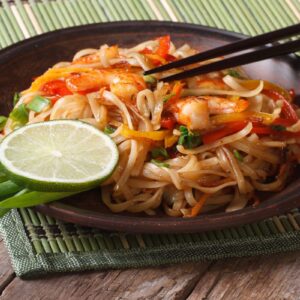
Shrimp Pad Thai
Ingredients
- 2 ounces flat rice noodles
Pad Thai Sauce
- 1 tablespoon fish sauce
- 1 teaspoon soy sauce
- 1½ tablespoons honey
- ½ tablespoon lime juice
- ½ teaspoon sriracha
Stir Fry Ingredients
- 1 tablespoon oil
- ½ small red bell pepper thinly sliced
- 1 clove garlic minced
- 6 to 8 medium shrimp peeled and deveined
- 1 large egg lightly beaten
- ¼ cup fresh bean sprouts
- 2 tablespoons peanuts divided
- 1 green onion sliced for topping
Instructions
- Cook the noodles according to the package instructions and set aside.
- Whisk fish sauce, soy sauce, honey, lime juice, and sriracha in a small bowl. Taste and adjust the sauce as needed. Set the bowl aside.
- Saute peppers and garlic in a skillet in oil over medium heat, about 3 minutes.
- Add the shrimp to the skillet and cook 4 minutes, flipping the shrimp halfway through.
- Push the peppers and garlic to the side of the pan. Add the egg, stirring as it cooks.
- Add the noodles, Pad Thai Sauce, bean sprouts, and half the peanuts to the pan. Toss to combine.
- Place shrimp Pad Thai on a plate and garnish with sliced green onions and remaining peanuts.
Notes

